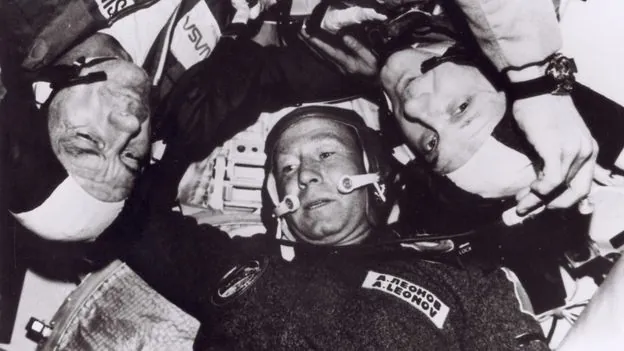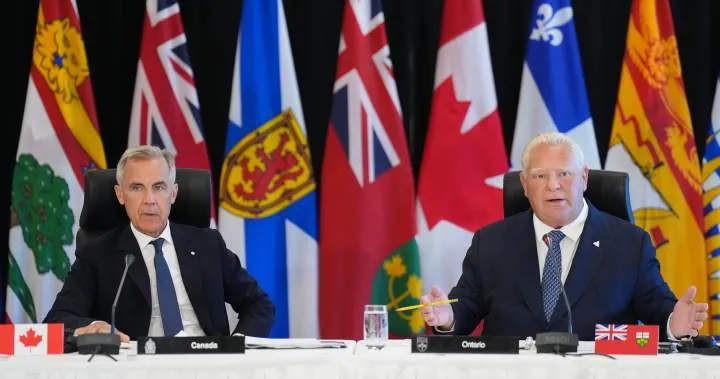
The Historic Handshake in Space That United Two Superpowers
2025-07-16
Author: Jacob
A 1975 Milestone in Space Cooperation
In an astonishing moment for humanity, a 1975 encounter between American astronauts and Soviet cosmonauts in orbit marked the first significant collaboration between the Cold War superpowers, paving the way for the International Space Station (ISS).
From Rivalry to Cooperation
By the age of 33, Glynn Lunney had already made a name for himself as one of NASA's most accomplished flight directors. His experience spanned from overseeing Apollo missions to saving Apollo 13 after its near-fatal incident. Yet, in a surprising twist of fate, Lunney was tasked to lead a mission that would shift the focus from competition to collaboration. He received a call from Chris Kraft, head of Mission Control, instructing him to prepare for an expedition to Moscow for the Apollo-Soyuz Test Project—an ambitious initiative aiming to connect a U.S. Apollo capsule with a Soviet Soyuz spacecraft in orbit.
A Journey Beyond Politics
Lunney's journey from a Cold War 'warrior' to a promoter of cooperation wasn't just a personal shift; it symbolized a thawing relationship between the United States and the Soviet Union, born from years of mutual competition. As historian Teasel Muir-Harmony notes, there had been prior discussions about collaborative space ventures, including data-sharing agreements during high-tension moments like the Cuban Missile Crisis.
Symbolism and Significance
The Apollo-Soyuz mission was not only about uniting two spacecraft; it was also steeped in symbolism. The U.S. crew included Deke Slayton, one of the original Mercury astronauts, while the Soviet crew leader, Alexei Leonov, was the first human to walk in space. This choice resonated deeply within the context of the ongoing space race and served as a beacon of hope for future collaboration.
Overcoming Technical and Cultural Challenges
Docking two very different spacecraft was no small feat. The Apollo's conical shape and technology designed for lunar travel contrasted sharply with the spherical Soyuz, which was configured for low Earth orbit. On top of that, cultural barriers loomed large, with both sides initially apprehensive about working together. Soon, however, they discovered shared values and mutual respect, which laid the groundwork for lasting friendships.
A Historic Docking
On July 15, 1975, the Apollo and Soyuz spacecraft launched from their respective sites, eventually coming together in a historic rendezvous that was both triumphant and amusing. As American astronauts knocked on the hatch, the Soviets jokingly responded, 'Who's there?' The ensuing handshakes and gift exchanges encapsulated a moment of shared humanity and achievement.
Legacy of Apollo-Soyuz
The Apollo-Soyuz mission transcended its era, laying the groundwork for a new paradigm in space exploration. As Svetla Ben-Itzhak, an expert in international relations, articulates, this collaborative effort marked the dawn of space diplomacy, proving that science could unify even the fiercest of rivals.
Continuing Cooperation Despite Tensions
Fast forward to today, and the collaborative spirit fostered by Apollo-Soyuz remains vital. Even with rising geopolitical tensions, astronauts from the U.S., Russia, and other nations continue to work hand in hand aboard the ISS, illustrating the uniquely unifying power of space exploration.
What Lies Ahead for Space Collaboration?
Looking toward the future, nations are now planning lunar exploration initiatives, which raises the question; will a similar spirit of cooperation emerge once again? For now, researchers and space enthusiasts are cautiously optimistic that the lessons learned from Apollo-Soyuz can guide future missions. As Kenneth Phillips mentions, successful collaboration in science can break down barriers and create a brighter future in space.
Honoring a Visionary
Following the Apollo-Soyuz project, Glynn Lunney continued to lead the Space Shuttle program, contributing significantly to America's ongoing adventures in space. His work remains a testament to the potential of rival nations to come together, igniting a legacy of teamwork that continues to inspire the world today.









 Brasil (PT)
Brasil (PT)
 Canada (EN)
Canada (EN)
 Chile (ES)
Chile (ES)
 Česko (CS)
Česko (CS)
 대한민국 (KO)
대한민국 (KO)
 España (ES)
España (ES)
 France (FR)
France (FR)
 Hong Kong (EN)
Hong Kong (EN)
 Italia (IT)
Italia (IT)
 日本 (JA)
日本 (JA)
 Magyarország (HU)
Magyarország (HU)
 Norge (NO)
Norge (NO)
 Polska (PL)
Polska (PL)
 Schweiz (DE)
Schweiz (DE)
 Singapore (EN)
Singapore (EN)
 Sverige (SV)
Sverige (SV)
 Suomi (FI)
Suomi (FI)
 Türkiye (TR)
Türkiye (TR)
 الإمارات العربية المتحدة (AR)
الإمارات العربية المتحدة (AR)